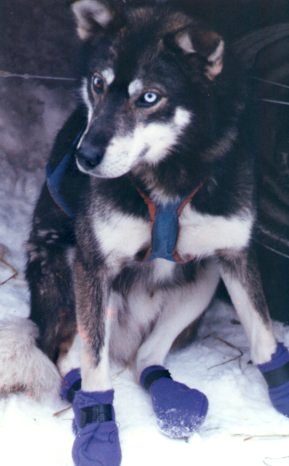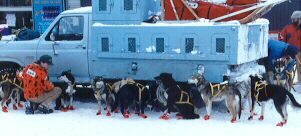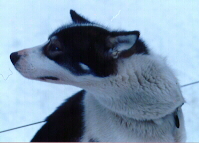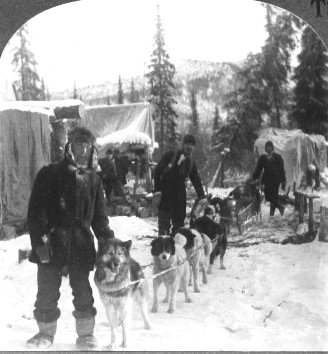Iditarod
Today, dogs with friendly faces teach us a lesson about excellence. The University of Houston's College of Engineering presents this series about the machines that make our civilization run, and the people whose ingenuity created them.
More than 1200 dogs line 4th St. in Anchorage, Alaska. They're tuned like violin strings and ready to run. Their yelps knife the cold air. This is the 20th running of the Iditarod dog-sled race.
The race begins here and ends 1160 miles to the northwest, in Nome. The first race took 20 days in 1973. Two years ago, the winner -- a woman -- took just over 11 days.
The word Iditarod is Indian. It means far-away-place. The Iditarod trail was a network of dog-sled paths around the faraway town of Iditarod. But that's not what this race is about.
This race celebrates a life-saving mission to Nome. In 1925, two Eskimo children died of diphtheria there. The doctor only had a few units of serum. Without a fresh supply, Nome faced an epidemic. Anchorage had serum. But Anchorage might as well have been on another planet.
Nome was ice-bound in the Bering Sea. No ship could get in. Bush pilots couldn't fly their open-cockpit planes in 40-below weather. A train ran from Anchorage to Fairbanks. But from there west lay 700 miles of wilderness. Nome's only access to the outer world was a pony-express system of dog sleds.
As diphtheria claimed more lives, doctors in Anchorage prepared a package of serum and sent it by train to Fairbanks, Meanwhile dog-sled mushers choreographed a desperation run to Nome. Twenty mushers set up dashes that would range from 20 to 90 miles in temperatures now diving to 56 below.
They got the serum through in 5½ days. They saved Nome. No one else died. Afterward, Nome erected a statue -- not to any musher, but to a lead dog, Balto. Balto's trail-wise good sense had saved the serum on the last leg of the trip.
Now I walk 4th Avenue, petting these wonderful dogs -- these beautiful friendly beasts with their oriental faces and glacier- blue eyes. One nuzzles against me while I talk to a lean young Swede. He came to Alaska 18 months ago and fell in love with the dogs. He's running his first Iditarod race today.
I give the dog a last scratch under the chin. Now he leaps to his traces for a far more grueling run than the one he celebrates. For this is the Last Great Race. It's a peculiar harmony of highly honed survival technology and human aspiration -- coupled with the special love that binds animal and human.
In the end, these splendid creatures call us down from the strutting and posing of human athletics. These gleeful dogs remind us that accomplishment is worthless if it's for anything less than the sheer joy of doing it.
I'm John Lienhard, at the University of Houston, where we're interested in the way inventive minds work.
(Theme music)
Schultz, J., and Sherwonit, B., Iditarod: the Great Race to Nome. Anchorage: Alaska Northwest Books, 1991.
See also issues of the Anchorage Times just before and during this race, which began on February 29, 1992.
The Iditarod race takes different routes in alternate years. This year it goes north through Whiskey Creek and covers 1161 miles. The other route goes south through Iditarod and covers 1163 miles. The original serum run didn't go through Iditarod, although it used part of the Iditarod Trail. Unlike the mushers and dogs in the 674 mile serum relay the ones who finish this race are the same ones who begin it.
As this first goes to air, the 1992 race is only four days old. Twenty percent of the entrants are women. The race seems to be a great gender leveler. The two favorites this year are four-time winner Susan Butcher and five-time winner Rick Swenson. The Swedish Rookie I spoke with was Tomas Israelson.
The dogs are not pure-bred. Many of them are Malamute husky breeds. But each musher has his own favorites. One musher tried to race with poodles. They did badly. By the way, every dog must return to a checkpoint. If one tires or falls ill the musher has to bring him in on the sled or forfeit the race.
I can't say enough for those winsome dogs. They are the most graceful, playful, and affectionate beasts I've ever met. And it is they who draw mushers to the sport.



Scenes from the running of the 1992 Iditarod
Photos by John Lienhard

Stereopticon image courtesy of Margaret Culbertson
An early-20th-century dog sled North of the Arctic Circle